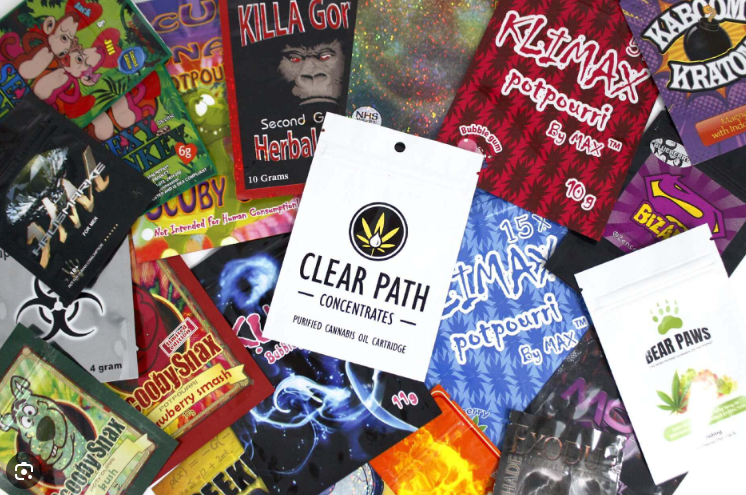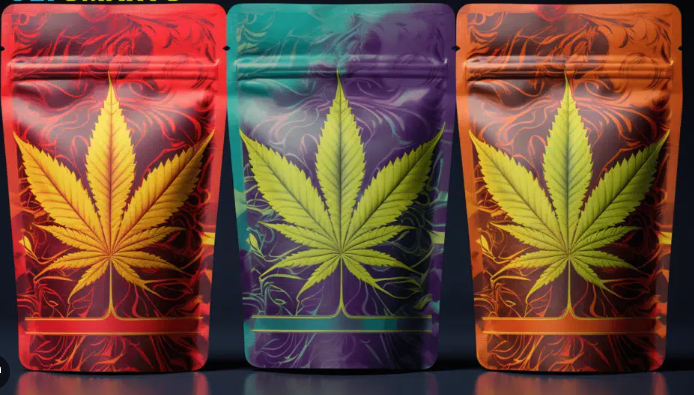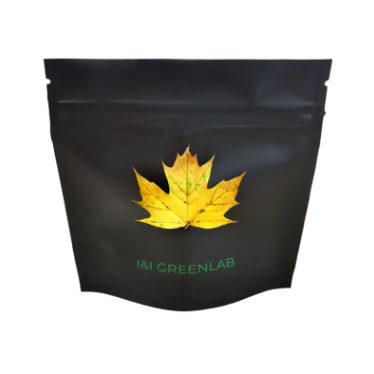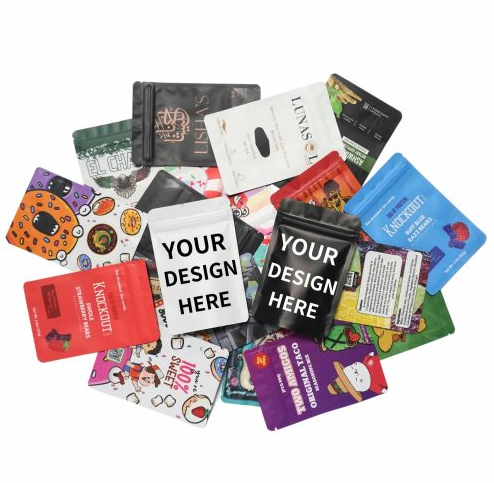Do You Know How Many Grams Are in A Zip?
Whether you work in the cannabis industry or are a casual recreational user, you've likely encountered a host of confusing cannabis terms and slang. Words like "couchy" (a high-indica strain causing lethargy), "burn one" (smoking a small amount, like a joint), or "chiefing" (socially sharing a session) are common. Among these, "how many grams are in a zip" is one of the most frequently asked—and often misunderstood—questions.
If you've ever wondered what a "zip" actually means in grams, how to choose the right packaging based on weight, or what the legal possession limits are in different regions, this article is for you. We'll dive deep into the true meaning of "how many grams are in a zip" and share how MTPAK leverages scientific measurement and professional pouch design to provide safer, compliant, and highly distinctive packaging solutions for cannabis brands.
Why does cannabis packaging require precise measurement?
In the legal cannabis market, a "zip" is a common informal unit of measurement, representing approximately one ounce (28 grams) of cannabis. This figure not only influences consumer purchasing decisions but also determines the precision required in packaging design, labeling, storage sealing, and compliance testing. For brands, understanding "how many grams are in a zip" isn't just about unit conversion—it's the first step in mastering the language of the market.
In most legal regions, such as California, Colorado, and Canada, retail cannabis packaging is typically available in sizes like 1g, 3.5g (1/8 oz), 7g (1/4 oz), 14g (1/2 oz), and 28g (1 oz / 1 zip). Different capacities correspond to different packaging needs, from pouch selection to moisture and odor protection design. Accurate weight labeling is a crucial reflection of brand credibility.
What are the legal possession limits for cannabis weight in different regions?
Understanding the significance of "how many grams are in a zip" is not just about mastering unit conversions; it's a critical step for brands to achieve compliant packaging across different markets. The legal status of cannabis varies globally, with each region having distinct regulations regarding possession limits, sales packaging, and labeling requirements.
In the United States, legal possession limits differ significantly from state to state. For example, California allows adults to legally possess up to 28.5 grams (approx. 1 zip) of cannabis flower, while Colorado sets a similar limit for both personal possession and retail packaging. For brands, this means labeling a package as "1 oz / 28g" is not just commercial information—it's a regulatory responsibility.
Canada operates under a unified federal standard, allowing adults to possess up to 30 grams of dried cannabis in public. Consequently, common packaging sizes in the market are predominantly 1g, 3.5g, 7g, 14g, and 28g, each requiring clear labeling of THC/CBD content, batch numbers, and health warning labels.
In European markets like Germany and Malta, legalization is still progressing gradually. While some countries permit medical or limited recreational use, possession limits and packaging specifications remain strictly controlled. Brands entering these markets must adapt package weights and label formats according to the latest guidelines from local regulatory bodies.
In Asia, Thailand has legalized medical and specific recreational use, but regulations emphasize transparent packaging management—requiring clear labeling of THC content, usage, and origin, alongside Child-Resistant (CR) packaging.
Overall, legal weight limits don't just determine packaging capacity; they directly influence packaging structure and design logic. From weight to labeling, from protection to identification, every detail reflects a brand's depth of understanding of the regulations.
What are the common types of cannabis packaging pouches?
In the legal cannabis market, the choice of packaging pouch defines a brand's first impression and determines whether the product can reach the consumer compliantly and safely. Today's cannabis packaging has evolved from merely "holding the product" to "expressing the brand"—it must meet regulatory requirements while allowing consumers to perceive the brand's attitude and quality. The different pouch types reflect distinct brand positioning and market strategies.
Mylar Bags: The Industry Standard
In the world of cannabis packaging, Mylar bags are almost a default standard. They are renowned for their excellent odor barrier, moisture resistance, and light-blocking properties, preserving the aroma and potency of cannabis flower to the greatest extent. Brands favor this pouch type not only for its safety, lightweight, and easy sealing but also because it is compatible with Child-Resistant (CR) designs, meeting strict compliance standards in North American markets. Mylar bags also offer ample design space—from full matte to metallic finishes, from spot UV to high-saturation color printing—allowing brands to express their unique voice.
Stand-Up Pouches: The Retail Shelf Star
For brands needing to stand out on retail shelves, the Stand-up Pouch is an ideal stage for display. The widened base allows the package to stand stably, while the broad central area provides ample space for visual design. Brands typically use this style for 7g, 14g, or 28g sizes, incorporating transparent windows, matte touch films, or holographic printing to let consumers sense the product's "quality and grade" at first glance. It's not just attractive—it sells.
Pre-Roll Pouches: Packaging Designed for Convenience
With the rapid growth of the pre-roll market, brands are rethinking the balance between "convenience" and "safety." Pre-roll pouches generally use high-barrier flexible films, offering odor and moisture protection, and can incorporate single-use tamper-evident features and CR safety zippers. For brands, this packaging acts as an "experience medium"—lightweight, portable, easy to share in social settings, and a carrier for reinforcing social brand attributes.
Exit Bags: Ensuring Safety at the Retail Level
The Exit Bag is often the "final package" a consumer encounters after purchase, yet its importance cannot be overlooked. State regulations often require retailers to use opaque, Child-Resistant (CR) exit bags to ensure product safety during transport and in public spaces. Some brands choose to extend their visual identity onto the Exit Bag, turning this seemingly "temporary" package into a mobile brand advertisement.
Compostable Bags: Sustainability as a Competitive Edge
As sustainable practices permeate consumer markets, compostable packaging is becoming a key differentiator for brands. Pouches made from PLA (Polylactic Acid) or compostable bio-based films can decompose naturally while maintaining barrier properties, reducing environmental impact. This type of packaging not only aligns with the policy trends for eco-friendly packaging in European and American markets but also reflects a brand's long-term vision—an "aesthetics of responsibility."
How to choose the right cannabis packaging?
Selecting cannabis packaging is more than just picking a bag; it involves a comprehensive consideration of regulations, product characteristics, sales channels, and brand image.
Ensure Regulatory Compliance: Different regions have strict requirements regarding cannabis weight, child resistance, odor barrier, and labeling. Packaging must meet CR (Child-Resistant) standards and net weight labeling.
Prioritize Product Protection: Cannabis flower is susceptible to humidity, light, and air. High-barrier materials like Mylar bags, aluminum foil laminates, or biodegradable barrier films effectively preserve aroma and potency.
Consider Sales Channel and User Experience: Stand-up pouches are ideal for retail shelves; portable or pre-roll products suit small-format flexible pouches; eco-conscious brands can opt for compostable materials, balancing image and values.
Don't Forget Brand Expression: Material, printing, and closure types all convey product quality and brand style.
Conclusion
Understanding "How many grams are in a zip" is not just about grasping the basics of cannabis measurement; it's the starting point for developing a strategic packaging approach. A precise, compliant, and brand-distinctive pouch not only protects the product's potency and aroma but also demonstrates a brand's respect for consumer experience and market norms.
MTPAK is a service provider specializing in customized solutions for flexible packaging, offering various cannabis packaging, coffee bags, food bags, and other custom services.For cooperation, please email or contact us via our website:
Email: account@mtpak.com
Contact us: https://mtpak.com/contact-mtpak





